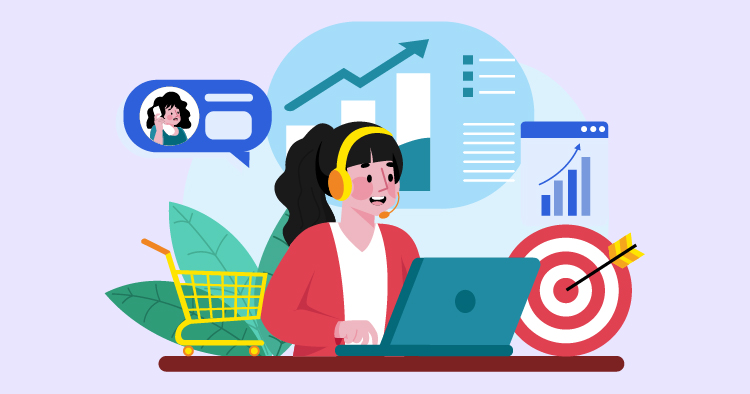The sales funnel is crucial for businesses looking to optimize their sales process and convert prospects into loyal customers. It serves as a roadmap for guiding potential clients through stages, from initial awareness to the final purchase decision. Understanding and implementing a well-structured sales funnel can dramatically improve your conversion rates and overall sales performance. This guide will delve into the steps necessary to build a successful sales funnel, highlighting key strategies and best practices to maximize your business’s potential for generating revenue and fostering customer relationships.
Understanding the Sales Funnel Concept
A sales funnel visualizes a customer’s steps, from learning about your product to buying it. It’s like a map that shows a customer’s journey, with four main stops: awareness, interest, decision, and action.
– Awareness: This is where the journey begins. It’s when potential customers first hear about what you’re selling. At this stage, your job is to get their attention and make them aware that you have a solution to their problem or a way to fulfill their need.
– Interest: Once you’ve caught their eye, it’s time to keep them interested. You do this by sharing more information and benefits about your product. You want them to start thinking, “This might be just what I need.”
– Decision: Now they’re seriously considering buying from you. They might compare your product with others or view the price and value. You want to show them that your product is the best choice.
– Action: Finally, they decide to buy. Your goal is to make the buying process easy and smooth. You want them to feel good about their purchase and become a happy customer.
By understanding and managing these stages, you can guide more people to the end of the funnel—the purchase.
Researching Your Target Audience
Knowing who you’re selling to is super important. It’s like knowing what someone likes before buying them a gift–it makes the gift much better. Understanding your target audience means you know what they need, what problems they have, and what they like or dislike. This helps you make a sales funnel they’ll want to go through.
Struggling with Digital marketing? Book Your Free Strategy Session!
- 30-Minutes Session
- Expert Insights
- Data-Driven approach
- Optimized Strategies for Your Goals
You can get to know your audience in many ways. For example, you could ask them questions directly through surveys or interviews. Customer data, like what they buy and when, can also give you clues. Social media is a goldmine for insights—you can see what your audience is talking about and their questions. Online forums are another great spot to learn about their challenges and interests.
When you understand your audience, you can make a sales funnel that feels like speaking directly to them. This makes your marketing hit the mark and helps guide potential customers through to buying your product.
Creating Compelling Lead Magnets
Lead magnets are like the hooks that draw potential customers into your sales funnel. They’re special offers—think of an informative ebook, an engaging webinar, or an attractive discount code—that you give away in exchange for contact details. A good lead magnet does more than grab an email address; it begins a relationship with your potential customer.
When putting together a lead magnet, it’s essential to think about what your audience wants. What are their pain points? How can you help? Make sure that you offer something helpful and connected to what you sell. The more accessible it is for someone to see the value and get your lead magnet, the more likely they will take the bait. Your goal is to make an offer so good that your audience can’t help but want more from you.
Building an Irresistible Landing Page
A landing page is where the magic happens—it’s where a visitor decides to become a lead. You want your landing page to look good and get straight to the point. It should tell visitors exactly what they’ll get and why it’s worth their time. Make it a breeze to navigate and design it so that everything leads to your primary goal: getting that click or sign-up.
Use customer testimonials, a list of benefits, and other trust-building elements to show that your offer is the real deal. Make sure your landing page matches the promise of your lead magnet and fits into your more extensive sales strategy. The call to action should be impossible to miss and simple to understand. Keep your page free from clutter that could distract from your goal.
And remember, a landing page can always be better. Use data to see what’s working and what’s not. Minor changes can significantly improve how many visitors turn into leads. Keep testing and adjusting to make your landing page the best.
Creating Captivating Email Sequences
Email sequences are potent tools for keeping in touch with potential customers. After someone shows interest in your product or service by visiting your landing page or downloading a lead magnet, you have a chance to nurture that interest. Sending targeted emails can help guide these leads through the sales funnel stages.
Focus on engaging and valuable content to create email sequences that resonate with your audience. Your emails should be like a friendly guide, offering insights and solutions directly relevant to your readers’ needs and interests. Personalization goes a long way; when an email feels like speaking now to someone, they’re more likely to engage with it.
Struggling with Digital marketing? Book Your Free Strategy Session!
- 30-Minutes Session
- Expert Insights
- Data-Driven approach
- Optimized Strategies for Your Goals
In your emails, aim to tell a story that makes your product or service shine. Highlight the key benefits and tackle any hesitations your potential customers might have. Answer their questions before they ask them, and you’ll build a foundation of trust that can lead to a purchase.
Implementing Effective Call-to-Actions
Call-to-actions (CTAs) are the signposts that tell your prospects what to do next. They’re the nudge that says, “Hey, if you’re interested, here’s what to do.” A well-crafted CTA can distinguish between a lead and a conversion, guiding your prospects closer to becoming customers.
CTAs should be easy to spot and understand. Use clear, action-oriented language that leaves no doubt about what will happen when someone clicks. A good CTA is like a friendly invitation that is too good to pass up.
Consider the journey your potential customer is on. Early on, a ‘Learn More’ button can be right when they’re just getting to know you. As their interest grows, you might offer a ‘Download Free Guide’ to provide valuable information. When weighing their options, a ‘Start Free Trial’ or ‘Book a Demo’ CTA can give them a taste of what you offer. And when they’re ready to commit, a ‘Buy Now’ or ‘Sign Up Today’ CTA can be the final encouragement they need to take the plunge.
Leveraging Social Media for Sales Funnel Success
Social media can be a game-changer for restaurants looking to enhance their sales funnel. It’s a vibrant stage where you can showcase your restaurant’s personality, share mouth-watering photos of your dishes, and connect with food lovers worldwide. Using platforms like Instagram, Facebook, and Twitter, you can create a buzz around your brand, pique people’s interest, and draw them closer to making a reservation or placing an order.
To make the most of social media, keep your audience engaged. Post content regularly, respond to comments, and keep the conversation going. Share behind-the-scenes looks at your kitchen, highlight your staff, and celebrate customer experiences. Don’t forget to encourage your patrons to post about their meals and tag your restaurant—this user-generated content is pure gold. And when you’re ready to take things up a notch, consider paid social media ads. They can be an intelligent investment, helping you reach a wider audience and attract potential customers to your website.
Tracking and Analyzing Sales Funnel Performance
Understanding how well your sales funnel works is critical to improving it. It’s like having a roadmap that shows you where you’re getting the best results and where you might be hitting a few bumps. To get this insight, you’ll want to monitor the number of people moving through each stage of your funnel, the time it takes someone to make a purchase, and whether you’re getting a good return on your investment.
Luckily, there are plenty of tools to help you track these details. Google Analytics is a go-to for many businesses, as it can show you how people find your website and what they do once they’re there. CRM software can help you keep tabs on customer interactions, and marketing automation tools can take much of the legwork out of following up with leads. Using these tools to monitor your sales funnel, you can spot trends, figure out what’s working, and tweak your strategy for even better results.
A/B Testing and Optimization
A/B testing is like setting up a race between two versions of your marketing content to see which one performs better. Imagine you have two emails, each with a different subject line. You send these to a group to see which subject line gets more people to open the email. This helps you understand what your audience prefers, and you can use this information to improve your marketing.
When you’re ready to start A/B testing, consider what you want to improve. Maybe you believe that changing the color of a button on your website will increase the number of people who click on it. Change just that one thing to ensure the results and see what happens. It’s essential to let enough people see the two versions so you can trust the results. Tools like Google Optimize or Optimizely can help you with these tests. Remember, the data tells you what’s working, not just a hunch.
Aligning Sales and Marketing Efforts
Getting your sales and marketing teams to work together is like having all the players on a soccer team moving in the same direction to score a goal. When everyone agrees on the game plan, they can pass the ball (or, in this case, potential customers) smoothly from one player to the next, increasing the chances of scoring (or making a sale).
They need to talk to each other often to get these teams working in harmony. They should share what they learn about customers and agree on success. Using tools that help them convey information quickly, they can ensure they’re all up-to-date on the game plan. When sales and marketing work as a team, they can create better strategies for turning potential customers into actual customers.
Retargeting and Remarketing Strategies
Retargeting and remarketing are techniques used to draw back people who have shown interest in your products or services but haven’t yet purchased them. Think of it as a gentle nudge to remind them about what caught their eye on your website. When these individuals browse other websites or social media platforms, they see ads for the items they viewed on your site, which can encourage them to return and buy.
To get the best results from retargeting, it’s essential to understand your audience. Group them by their activity on your site, such as what they looked at or added to their cart. Then, create ads that speak directly to their interests. You can use tools like Google Ads or Facebook’s retargeting features to place these ads where your potential customers are most likely to see them. Ensure that the ads feel like a natural part of their browsing experience and that they fit your broader marketing strategy.
Nurturing Customer Relationships
After someone buys something from you, that’s just the beginning of a long-lasting relationship. Keeping in touch with customers, making them feel special, and thanking them can lead to more sales and even new customers through referrals. It’s about showing customers you value them, not just their wallets.
To create these strong relationships, focus on providing top-notch customer support and reaching out after they’ve purchased to see if they’re happy with it. Offer them customized recommendations or exclusive deals. Regular updates through emails or newsletters help keep the conversation going. Ask for their feedback to show that their opinions matter to you. Consider setting up a loyalty program that rewards them for returning, making them feel appreciated and more likely to continue supporting your business.
Scaling and Expanding Your Sales Funnel
Growing your business means ensuring your sales funnel can handle more interest and potential customers. This could mean setting up some parts to run automatically, reaching out through more marketing channels, or getting better at finding the right people to target. Your sales funnel should be able to change and grow along with your business needs.
When you’re looking to reach more people, you might think about getting into new markets or talking to different types of customers. Learning about these new areas is crucial, as figuring out what these customers are looking for and changing your sales approach to connect with them. Try various methods and keep tweaking your plan based on what the numbers and feedback tell you.
Troubleshooting and Overcoming Sales Funnel Challenges
When working with a sales funnel, you might encounter issues like not enough people making purchases, potential customers getting stuck at a certain point, or not doing a good enough job keeping potential customers interested. Spotting these problems early and investigating why they’re happening is critical.
To get past these hurdles, make it a habit to look over how your sales funnel is doing. Spot where things are getting jammed up and try new ways to fix these issues. Listen to what customers and your sales team have to say. Keep up with the latest tips and tricks for sales funnels, and always be ready to adjust your methods to get the best results.
Final Thoughts
A well-crafted sales funnel is more than just a business tool; it reflects a company’s understanding of its customer journey. By carefully analyzing each stage and refining your approach, you can create a sales funnel that captures, nurtures, and converts leads. Remember, the goal is to provide value at every step, build trust, and make the purchase seamless. With the insights and strategies discussed, you can design a sales funnel that aligns with your business goals and resonates with your target audience.



